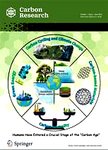版权所有:内蒙古大学图书馆 技术提供:维普资讯• 智图
内蒙古自治区呼和浩特市赛罕区大学西街235号 邮编: 010021

作者机构:School of Life and Environmental Science Shaoxing University P.R. Shaoxing312000 China School of Civil Engineering Shaoxing University P.R. Shaoxing312000 China Faculty of Applied Sciences Universiti Teknologi MARA Selangor Shah Alam40450 Malaysia
出 版 物:《Carbon Research》 (Carbon. Res.)
年 卷 期:2025年第4卷第1期
页 面:1-11页
核心收录:
基 金:This work is supported by the Natural Science Foundation of Zhejiang Province China (LGF20C030001)
主 题:Chitosan
摘 要:Precious metal demand was rising dramatically along with the growth of contemporary industry. However, the discharge of gold ions wastewater had caused environmental pollution and shortage of resources. Herein, using dialdehyde cellulose nanofiber (DACNF) as a cross-linking agent to immobilize chitosan (CS) was used to recover Au(III) from wastewater. The physicochemical characterization of the as-prepared adsorbents was performed by characterization methods. To investigate the adsorption performance of DACNF-CS for Au(III), a thorough investigation was conducted into the effects of pH, temperature, adsorption period, and starting concentration. The outcomes demonstrated that the adsorption process could be well described by the pseudo-second-order and Langmuir models, and the maximum adsorption capacity of DACNF-CS for Au(III) reached approximately 65.5 mg/g. The characterization analysis conformed that the Au(III) was adsorbed by an adsorption-reduction process. In order to facilitate the reduction of Au(III) to Au(0), Au(III) was first adsorbed on -NH2 groups by electrostatic attraction and chelation, which supplied an electron acceptor for the -OH groups. DACNF-CS was therefore a good option for recovering Au(III) from aqueous solutions because of its high efficiency, ease of production, and environmental friendliness. © The Author(s) 2025.